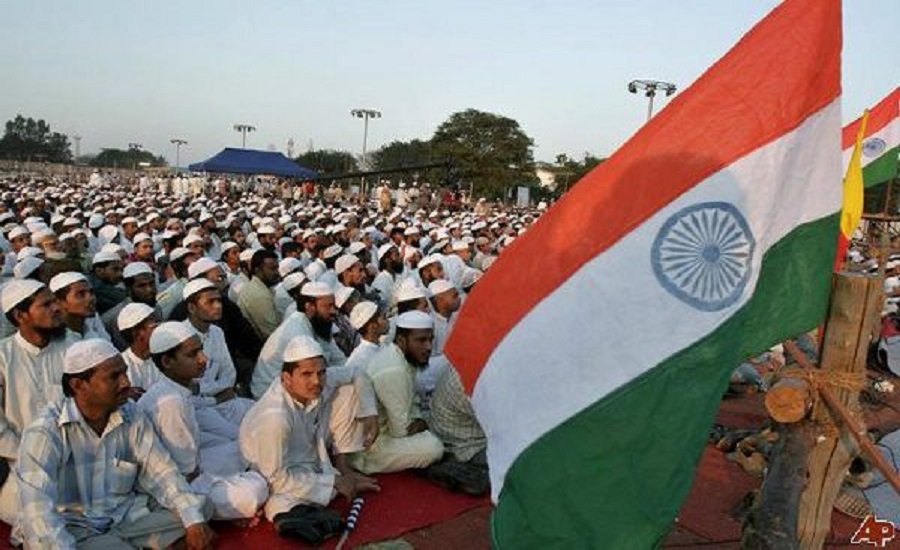
The report noted that Indian Muslims lagged far behind other marginalised communities, and urgent attention and holistic measures are needed to deal with the situation.
Waquar Hasan | Clarion India
Key observations:
- Muslims continue to be among the poorest and most disadvantaged groups in India
- Post-Sachar education policies specifically targeted at Muslims have had very limited impact
- Learning skills of vulnerable Muslim primary students are among the poorest and significantly substandard
- All Disadvantaged students including vulnerable muslims likely to be disproportionately represented among the weakest school and college learners
- Schools failing in equipping disadvantaged students to become responsible citizens
NEW DELHI – A new report titled “A New Agenda for The Education of Indian Muslim in the 21st Century” reveals a gloomy picture of Indian Muslims’ educational status, and shows the way out of this mess.
The report, compiled by Pune-based educationist Dr. John Kurrien, noted that Indian Muslims lagged far behind other marginalised communities, and urgent attention and holistic measures are needed to deal with the situation.
Noting about the educational backwardness of the minority community, the report said, “Official data indicates that Muslims have now the lowest levels of school and higher education enrolment–even lower than traditionally disadvantaged groups like SCs and STs–and have also the lowest participation rates in all prestigious school and higher educational institutions including KGBVs, central universities, and institutions of national importance”.
Citing a pioneering 2018 intergenerational mobility study, the report observed that during the economic liberalisation period, all marginalised communities, including SCs and STs, have made upward mobility gains but for Muslims, these opportunities substantially deteriorated.
It said that the Sachar Committee report sheds light on the educational backwardness of the Muslims. But even more than 10 years after the report came out, the situation has further deteriorated and new developments have come up in this decade.
The new agendas proposed by Dr Kurrien argue to “focus exclusively on the learning of poor and lower middle-class (vulnerable/disadvantaged) Muslim youths under 25 years, who constitute about 80% of the total Indian Muslim population”.
It has laid down three goals of the new agenda for the education of Indian Muslims:
1– Ensure all Muslim children complete a full cycle of 12 years of quality school education from Classes 1-12 leading to relevant learning outcomes by 2030.
2 — Ensure all Muslim children between birth – 6 years benefit from access to Early Childhood Development programmes, which include 2 years of pre-primary education by 2030.
3 — Ensure all Muslim youths outside the formal education system under 25 years have better access to educational opportunities and vocational training.
Talking about the condition of the learning capability among Muslims, the report said “recent ASER and IHDS 2–both large scale learning surveys of Indian students–revealed that in terms of acquisition of reading, writing and arithmetic skills, Muslim primary students were either the worst performers, or among the worst, in comparison to OBCs, SCs/ STs and their peers from other religions”.
In this regard, the Urdu medium students are also not in good condition. “A 2005 Pratham study indicated that primary students in Urdu medium Municipal Corporation schools of Mumbai fared significantly lower in reading and writing than Hindi and Marathi medium students.
“In Class 3, as much as 54.3% of Urdu-medium students were classified as unable to read; and 58.8% as unable to write. The corresponding figures for Class 4 students were not less shocking at 41.2% and 44.6% respectively”.
The report draws attention towards three important issues which concern school education of the vulnerable Muslims: Girls education, medium of education and madrasa. Regarding the girl education, the report noted that there was negative behavior among the religious Muslims but the situation has changed. There has been progress in girl education but it has been limited.
The report pointed to the issues with the Urdu medium education in schools. It said that in the absence of Urdu medium higher education system, those students who get their school education in Urdu face difficulties to go to the higher stage of education.
“The disaggregated data reveals the fundamental problem that Urdu medium schools face in all states. Even in Maharashtra, for parents and students who want to pursue a full course of Urdu medium school instruction from primary school to higher secondary or even high school, there are few such complete schools in most rural and urban locations.
“An analysis of transition rates of students in Maharashtra has noted that “Muslim students are not able to move from Urdu medium schools to other medium schools and they drop out from the education system early,” noted the report.

